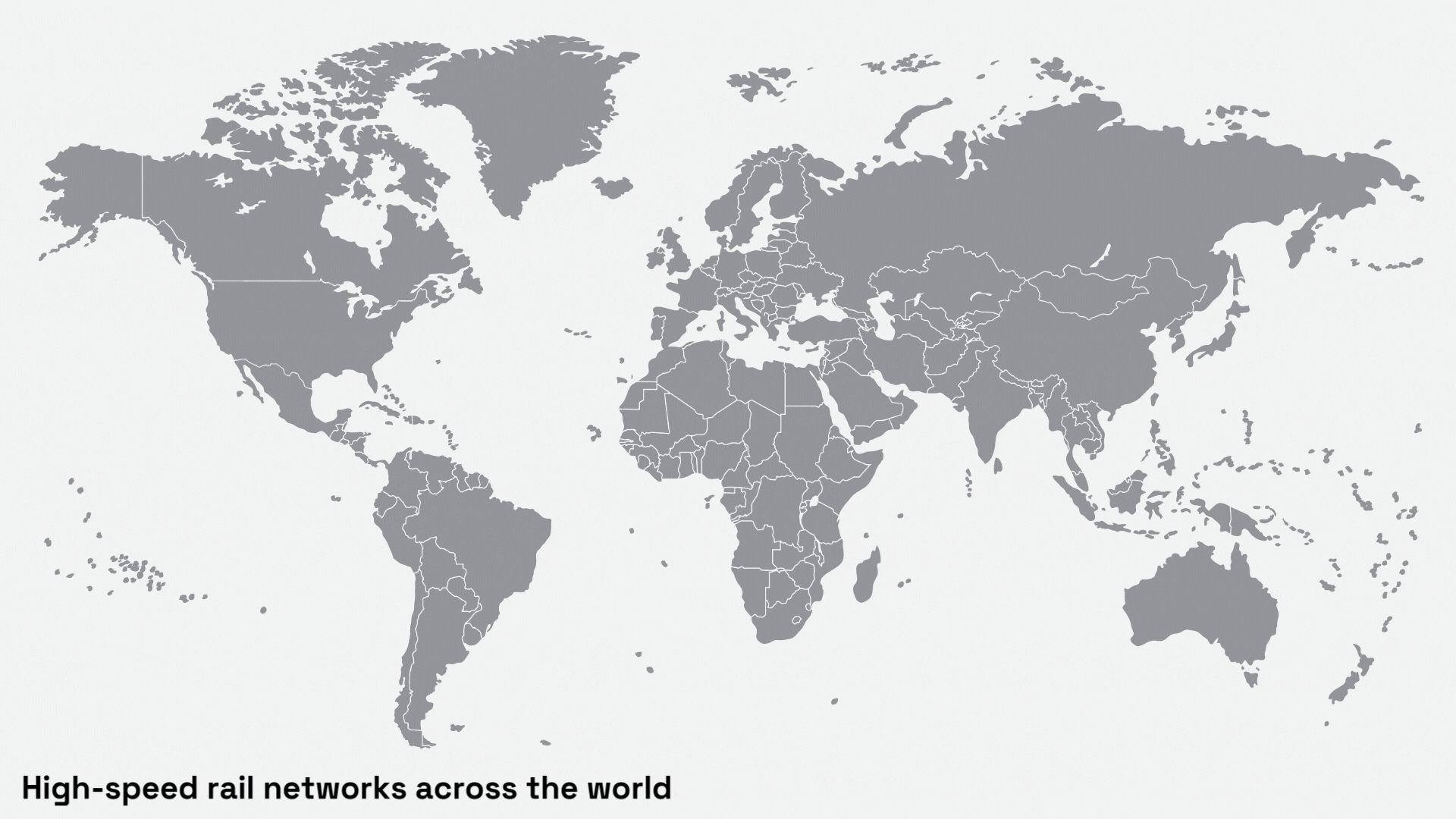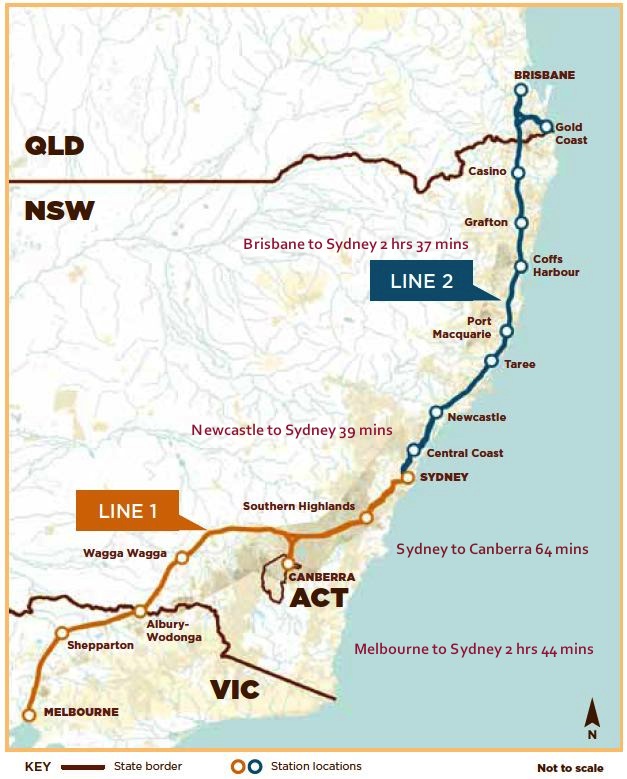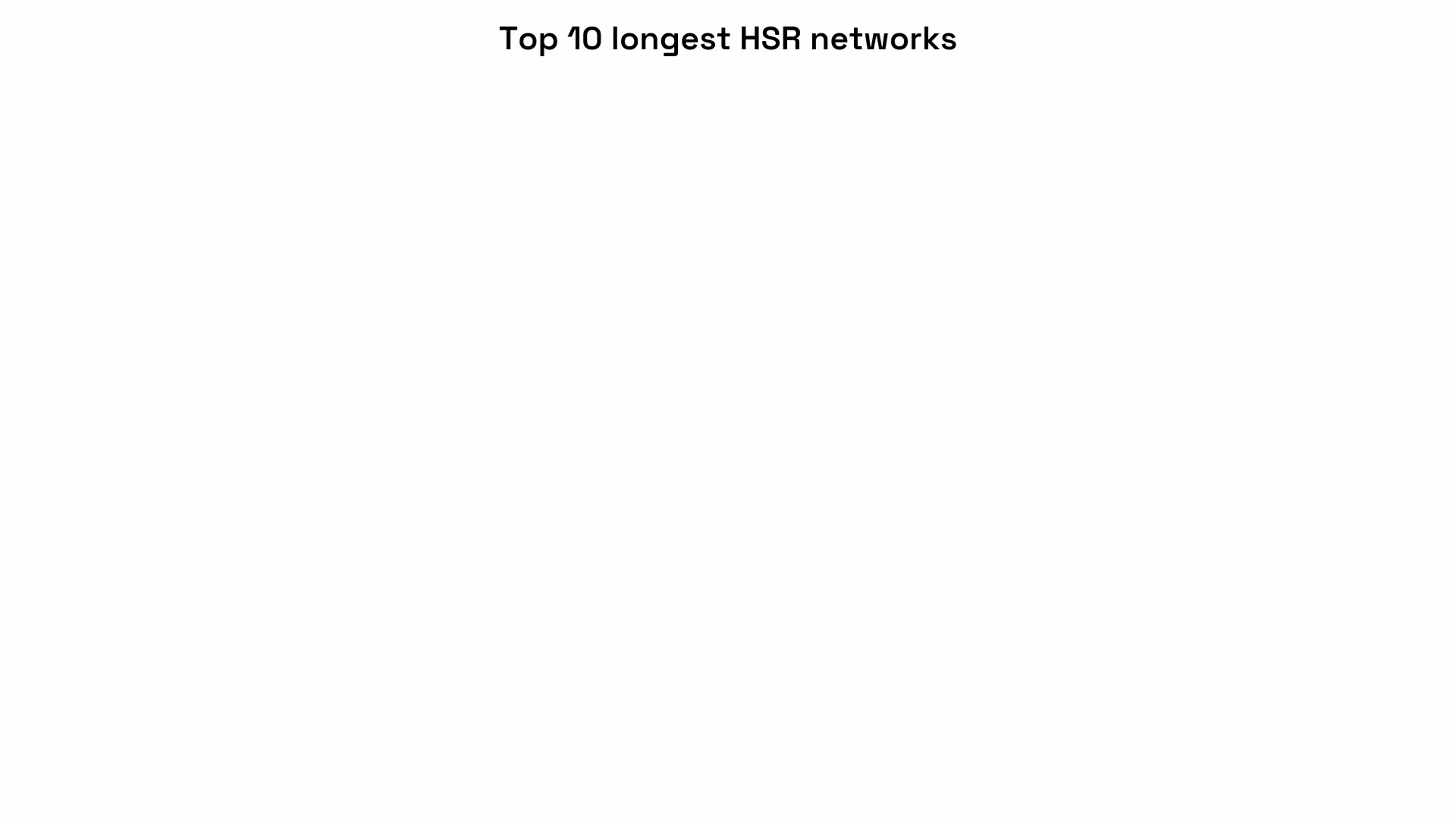
High-speed rail offers more efficient travel and impressive top speeds. Here’s how different networks across the world compare, and where a high-speed route could be built in Australia.
Story by Lachlan Haycock and Joseph Harding
It’s had a fractious planning history in Australia, but high-speed rail (HSR) has been implemented in countries across the world to drastically shorten travel times and offer top speeds of more than 300 km/h.
This country is yet to implement a HSR network, which could cut travel time between Sydney and Canberra by two-thirds; it’s currently a three-hour car journey, but travelling by HSR would take just one hour.
So how close has Australia come to constructing HSR, which countries boast the most extensive HSR networks, and how do the specs of different routes match up?

The story of high-speed rail in Australia
An extensive study of HSR possibilities was published by the Australian government in 2013, outlining a suggested two-part network that would comprise approximately 1748 km of dedicated lines.
Sydney would be the hub for one southbound line and one northbound line, which would extend to Melbourne and Brisbane respectively. It was estimated to cost $144 billion.

The newly instituted High Speed Rail Authority is intended to pick up where this plan left off. This network is estimated to require 15 years of planning and 30 to construct.
A business case is currently being prepared for the first section of the line, running between Sydney and Newcastle. The rest of the route is still expected to extend to the Melbourne and Brisbane poles.
With funding for infrastructure projects increasingly hard to come by, coupled with governments’ lack of expertise in land development, Curtin University Professor Peter Newman, the Chair of the Intergovernmental Panel on Climate Change Transport Chapter, believes private-public funding mechanisms are the way to go.
“There’s an important principle about the requirement of private sector funding, so we can get proper development of stations both in cities and along the way in regional areas, and really good town developments around them,” Newman told create in 2023. “There’s also plenty of global money for net-zero projects, and all of these HSR proposals can be net zero.”
The potential benefits of HSR are numerous, according to Colin Calder CPEng, Director and Founder of CJC Management.
Speaking to create earlier this year, Calder said there must be cooperation between political parties to ensure progress on HSR isn’t derailed.
“I think that, initially, the cost has put people off,” he explained. “And in the past, the technology wasn’t as advanced as it is now. But Japan has had a bullet train running since 1964, and is probably on its third or fourth iteration. The next generation of trains will be maglev – or magnetic levitation – trains, which are quieter and faster than previous models.
“[In Australia] it’s going to take a number of years and multiple governments to get HSR across the line.”

An international comparison
A major rail revolution is happening around the world due to the superiority of rail solutions, particularly as countries pursue net zero carbon emissions.
“They’re faster, better in terms of ride quality and safety, and you can build around them so you don’t sprawl your city,” Newman said.
Regardless of the perceived value of HSR or of a certain route over another, many nations have embraced the technology. Let’s take a look at some key examples of where it is proving most useful.
Consider the following list of most popular flight routes. The millions of people moving from location to location within countries such as Japan and Indonesia delineate an opportunity for more efficient transportation modes.
The popular Sydney-Melbourne route is number five on the list.
Of the above countries, most already have HSR – all bar Australia and Vietnam, the latter of which is investigating its options. Japan and China arguably set the gold standard for embracing and integrating HSR. The latter boasts a nationwide network that runs to 45,000 km.

India has announced a plan for production of two 1435 mm-gauge trains that will run on the HSR track between Mumbai and Ahmedabad, the first in the country. Saudi Arabia has HSR running between hotspots Mecca and Medina, and Indonesia has just this year unveiled a 143 km line between Jakarta and Bandung in populous Java.
Then there’s the cream of the crop, Shanghai’s maglev, which boasts a top operating speed of around 460 km/h. The train’s magnetic levitation technology, where trains “float” on magnetic cushions, allows it to achieve greater propulsion than conventional high-speed trains.
This innovative setup eliminates the friction caused by contact between the bottom of the train and the rail, making wind resistance the primary source of friction.

To learn from these international examples, Calder said Australia can utilise its current rail network, talent and technology rather than worry about needing to build from scratch.

